Top dressing of orchids during flowering
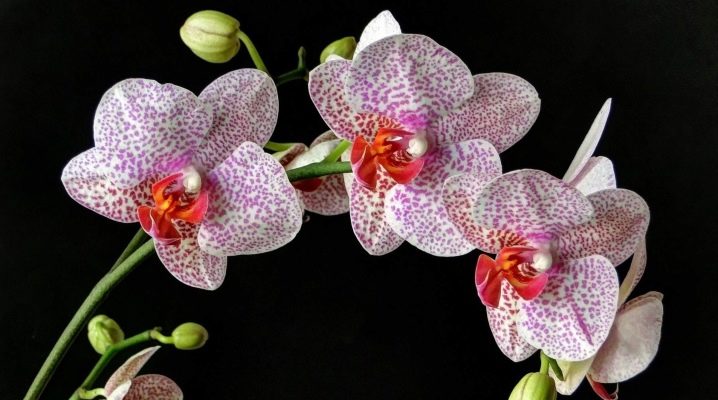
Among the wide variety of houseplants, orchids are in great demand. And also this amazing plant often adorns house plots and gardens. It attracts attention with amazing shapes and expressive colors. A flowering plant will brighten any room, giving the interior brightness. This article will focus on one of the most important aspects of flower care - feeding an orchid during flowering.
The need for fertilization
The period when the plant is covered with flowers is a special time for each representative of the flora. At this time, the orchid needs special and proper care. In order for the result to meet expectations, it is necessary not only to choose the right fertilizers, but also to perform the work taking into account all the rules.
It is strongly discouraged to feed the plant if it was already covered with buds at the time of purchase. This suggests that during the growth of the peduncle, the flower received all the necessary elements for further flowering. But with the onset of a new period, you should definitely add a new portion of top dressing.
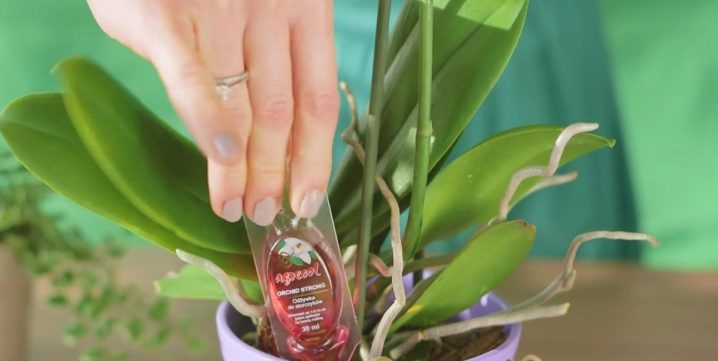
If you buy a plant from a specialty store, chances are the flower will be sold growing in fertile soil. The soil contains all the elements for normal growth and development. Despite this fact, the nutrients in the earth are gradually drying up and in need of renewal.
So that the plant does not start to hurt or wither, it is necessary to make fertilizing with the necessary microelements for the plant. For bright and lush buds, potassium and phosphorus are required. If it is necessary to bias the growth of shoots and foliage, opt for formulations with nitrogen. Be sure to evaluate the composition of the drug before purchasing and using it.
But there are some prohibitions on orchid fertilization.
- Top dressing, which is introduced under the root, is contraindicated for a weakened flower. And also discard them during exuberant flowering.
- If you just transplanted an orchid to a new place, forget about fertilization for a while. Must completely go through the adaptation period. This will take about a month.
- In the hot season, it is better to abandon the introduction of nutrients or greatly reduce them, especially if the flower is outside and is exposed to sunlight and hot air.
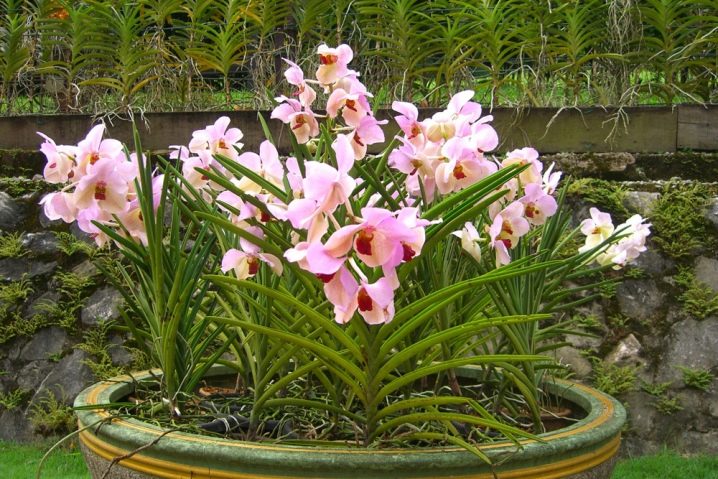
Carefully monitor the condition of the plant by carefully examining it. Before using the drug, be sure to read the instructions for use. It contains dosage information and other important information.
Main steps
The feeding process differs depending on the flowering phase. It is necessary to familiarize yourself with the main rules of fertilization.
Peduncle formation (budding)
During the formation of future buds and at the very beginning of flowering, the plant loses a lot of strength. Useful substances go to the laying of flowers and their further development. It is at this time that the most active and rich feeding of the plant is carried out.
As already noted, potassium and phosphorus are considered the main elements at this time. The first element plays an important role in the process of photosynthesis, and a sufficient amount of the second element is necessary for large and lush flowers.
Active flowering period
The second phase of a plant begins when a large number of buds have opened and delight with beauty. Some gardeners note that at this time it is possible to completely abandon the introduction of additional elements. The fact is that the plant has already received the necessary portion of nutrients for flowering.
If necessary, you can reduce the amount of fertilizer applied to a minimum to maintain the orchid. In this case, reduce the concentration of the dressing by 3 times from that indicated in the instructions for the preparation.
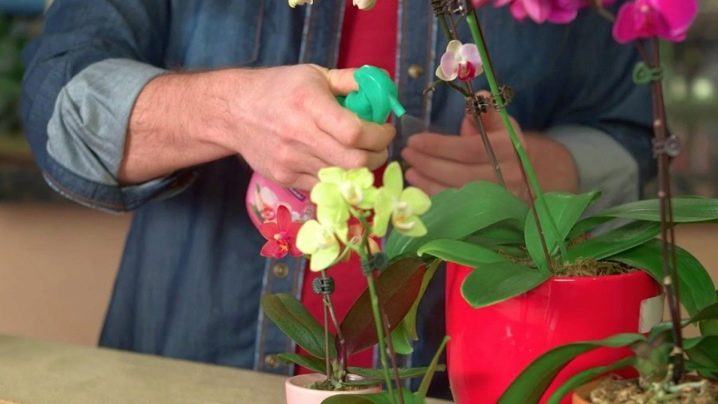
Withering
The final stage comes when the buds begin to fade gradually. If the plant does not continue the process of forming new peduncles, then it is necessary to provide the flower with a full-fledged state of rest to restore strength. During this period, the flower should be fed with a complex composition.
Balanced preparations are used to support the plant. The peculiarity of such fertilizers is that they do not have a large amount of phosphorus or potassium.
The preparations are applied within 14 days after the last flowers have wilted. After that, the amount of dressing and water is significantly reduced. A new portion of nutrients is added no earlier than after 30 days.
Care
At different times of the year, different orchid care is required.
Summer and winter
During the above periods, it is rarely necessary to process the orchid; it is enough to fertilize only once a month.
The reason for this approach is that with the onset of winter, all plant processes slow down significantly. The root system at this time is not able to process a large number of useful elements.
The hot air that envelops the plant with the onset of summer also negatively affects the orchid. A flower cannot absorb many macronutrients.
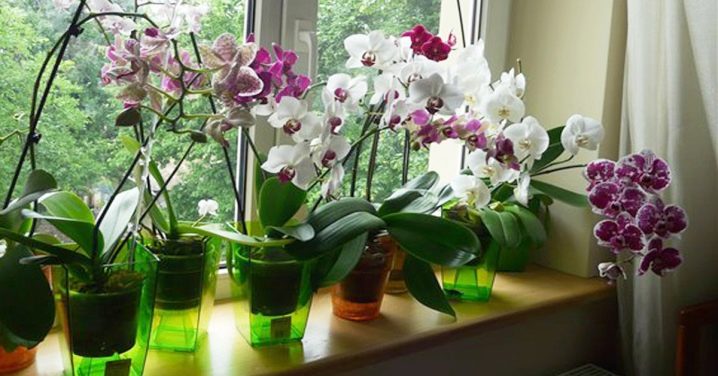
Spring and Autumn
During this time, fertilization should be increased. It is recommended to carry out frequent fertilizing of the flower. Due to the growth of a sunny day, stabilization of temperature and other factors, flowering becomes longer and more active.
If the conditions for the plant are favorable, the orchid can start flowering again without even taking a break. Gardeners note that this plant does not have a pronounced state of dormancy. And also the frequency of bud formation depends on the variety. Some species bloom more often than others.
What are the best tools to use?
It has already been noted in the article that only foliar fertilizers should be applied during flowering.
Feeding a flower at home is not difficult. Most often, special universal formulations are used. Their complex composition includes all the elements necessary for the plant, so there is no need to introduce additional substances. When diluting the fertilizer, take 3 times more liquid. So the concentration of the drug will be appropriate.
Liquid dressings are great. This is a convenient and effective option for an orchid. It is strongly recommended to use 2 times more water when diluted compared to the indicator indicated in the instructions.
Compositions that are sold in the form of sprays are very practical to use. It is enough to spray them on the plant. Substances penetrate into the flower through foliage, stem and flowers. On sale you will definitely find formulations designed specifically for fertilizing orchids.

What can't be used?
When evaluating a wide range of drugs, you need to know exactly which products cannot be used to fertilize orchids. It is strongly not recommended to use top dressing in the form of sticks or soil tablets. The fact is that in the ground they will dissolve unevenly, and areas where the content of nutrients will be increased can damage the root system.
Experts advise to abandon folk methods in the feeding process. The orchid is considered a very delicate flower, so self-prepared compositions can only do harm.
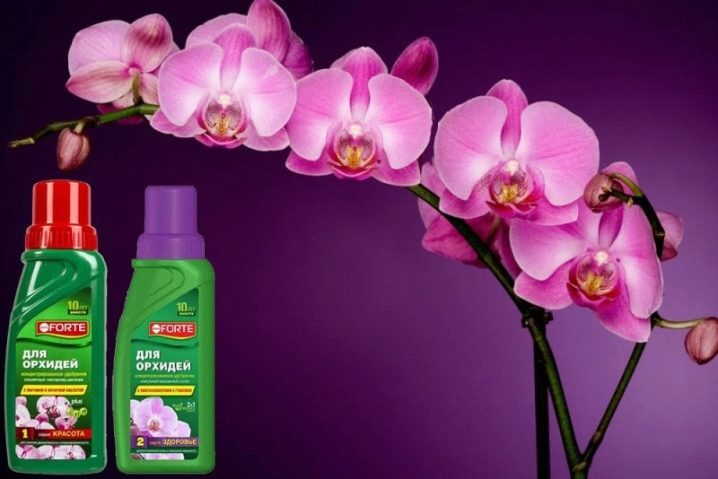
How to fertilize a street plant?
If the flower is planted in the open air, it does not need feeding as much as an orchid growing in an apartment. However, additional help to the plant will be quite appropriate. In this case, you can safely use formulations and preparations that are suitable for fertilizing indoor flowers.
- The finished fertilizing composition (previously diluted with water) must be poured into a clean container with a spray bottle. Use a nozzle that will spray the fertilizer well, not spray.
- Before spraying the drug, be sure to shake it thoroughly. Otherwise, the concentrated particles in the composition can burn the delicate foliage and flowers.
- During operation, the fertilizer should be evenly distributed over the flower. Leaves cover the compounds on both sides. And also a little of the composition is applied to the roots located above the ground.
- When applying the drug, do not spray it on the growing point, buds and the base of the shoots.
- The procedures should be carried out in the evening and morning.
- After you have treated the plant, make sure that it does not fall on direct sunlight.
- The plant can be sprayed only in a room where the air temperature varies from +18 to +26 degrees.
- Use warm water for dilution. The liquid should be settled, without heavy impurities. The optimum water temperature is 2-3 degrees higher than the air temperature in the room.
- If you are using a ready-made compound that is sold in a container with a spray bottle, it does not need to be pre-diluted.
As for spraying a plant that is planted in open ground, then the work is carried out in the same way as the above process, but with some changes.
- Only foliage is sprayed.
- Work should be carried out either in the morning or in the afternoon, but only in cloudy weather. If you spray the plant overnight, there is a high risk of disease due to a drop in temperature.
- Top dressing is carried out a couple of times a month.
































The comment was sent successfully.